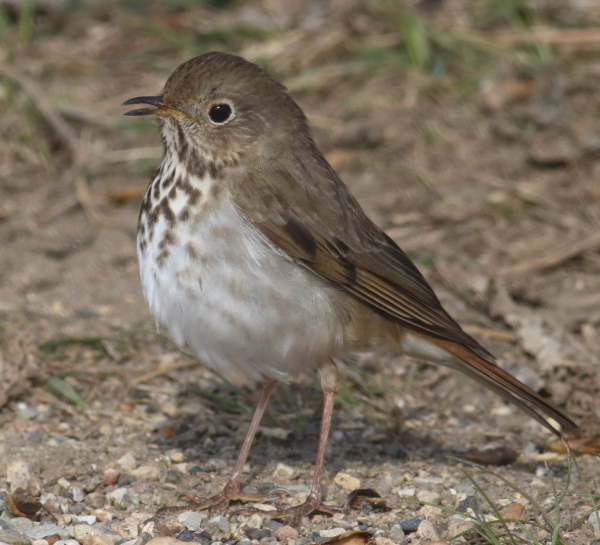
Hermit Thrushes are among the estimated 10 million birds estimated that utilize the new Thaidene Nene Preserve.
|
More than 10 million birds have a protected area to migrate to each spring for years to come thanks to a tiny First Nation community called Lutsel K’e Dene, located on the shore of one of the world’s largest lakes, Great Slave Lake in the Northwest Territories of Canada. Their massive gift to the world is a new Indigenous Protected Area that encompasses a landscape of astonishing size – more than six million acres – one of the largest land protection actions in recent history, more than twice as large as Yellowstone National Park.
The Lutsel K’e Dene First Nation has been working for many years with both the government of the Northwest Territories and the federal government of Canada to enshrine Thaidene Nene, which in the Indigenous language means “land of the ancestors,” as an interconnected protected area consisting of a national park reserve, a territorial park, and a specially managed wildlife conservation area.
In an exciting new model, the Lutsel K’e Dene First Nation will be managing Thaidene Nene in equal partnership with both crown governments. The announcement and signing ceremony on August 21 made these designations official, along with the First Nation’s designation under Indigenous law of the area as an Indigenous Protected and Conserved Area.
Within Thaidene Nene, the shores and cliffs overlooking the “east arm” of Great Slave Lake are used by nesting Bald Eagles, Peregrine Falcons, and Ospreys. Small islands scattered throughout the lake and wetland areas provide nesting sites for Red-throated Loons and Common Loons; Mew, California, and Herring Gulls; Arctic Terns, and occasional Parasitic Jaegers. Area wetlands attract swans, geese, and a variety of ducks, sandpipers, plovers, grebes, making it an important region for migrating and nesting waterfowl, shorebirds, and waterbirds.
The vast landscape of forests, shrublands, and peat bogs across the millions of acres of Thaidene Nene ring with the songs of nesting Hermit Thrushes, Harris’s Sparrows, Smith’s Longspurs, Blackpoll Warblers, Tennessee Warblers, Palm Warblers, Northern Waterthrushes, Yellow Warblers, Lincoln’s Sparrows, Common Redpolls, and many more songbirds.
Jeff Wells, Audubon’s Vice President of Boreal Conservation, noted: “We all should be thanking the people of the Lutsel K’e Dene First Nation for showing us a creative positive path forward as the world wrestles with problems of climate change, biodiversity loss, and social justice. It is possible to find solutions and the Indigenous leaders of places like the Lutsel K’e Dene First Nation have proven it again with [the August 21st] announcement.”
Water is the dominant theme throughout much of Thaidene Nene. To the northeast of Great Slave Lake – the world’s ninth largest lake – Thaidene Nene encircles a vast region speckled with wetlands, streams, rivers, and thousands of lakes and ponds. Thaidene Nene is one of the only protected areas in Canada that contain lands on both sides of the tree line, where northern trees of the boreal forest slowly fade into vast expanses of vibrant Arctic tundra.
To refer to the original Audubon article, see https://www.audubon.org/news/first-nations-and-canada-partner-establish-protection-6-million-acres